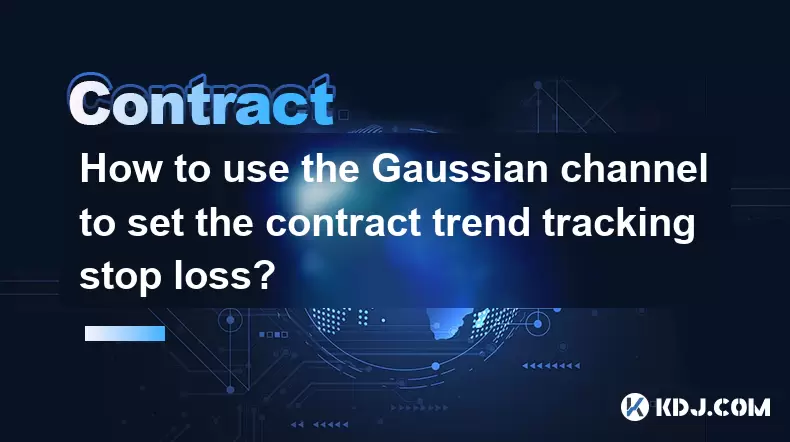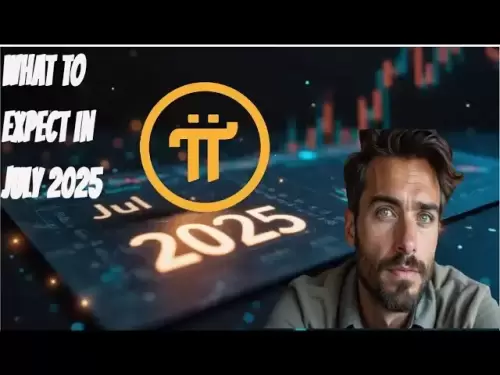-
 Bitcoin
Bitcoin $107,443.3008
-1.17% -
 Ethereum
Ethereum $2,494.2503
-0.63% -
 Tether USDt
Tether USDt $1.0003
0.00% -
 XRP
XRP $2.2496
2.23% -
 BNB
BNB $658.7569
0.63% -
 Solana
Solana $154.9826
1.94% -
 USDC
USDC $1.0000
0.01% -
 TRON
TRON $0.2799
1.07% -
 Dogecoin
Dogecoin $0.1659
-1.78% -
 Cardano
Cardano $0.5745
0.25% -
 Hyperliquid
Hyperliquid $39.7005
0.13% -
 Bitcoin Cash
Bitcoin Cash $519.5989
3.78% -
 Sui
Sui $2.7874
-2.40% -
 Chainlink
Chainlink $13.3762
-1.69% -
 UNUS SED LEO
UNUS SED LEO $9.0784
-0.64% -
 Avalanche
Avalanche $17.9846
-2.81% -
 Stellar
Stellar $0.2390
-0.06% -
 Toncoin
Toncoin $2.9028
0.25% -
 Shiba Inu
Shiba Inu $0.0...01147
-2.17% -
 Litecoin
Litecoin $86.6956
-1.27% -
 Hedera
Hedera $0.1508
-0.50% -
 Monero
Monero $322.6222
3.26% -
 Polkadot
Polkadot $3.4124
-2.99% -
 Dai
Dai $0.9999
0.00% -
 Bitget Token
Bitget Token $4.5434
-1.97% -
 Ethena USDe
Ethena USDe $1.0002
0.00% -
 Uniswap
Uniswap $7.1562
-2.61% -
 Aave
Aave $275.8830
-1.02% -
 Pepe
Pepe $0.0...09790
-4.04% -
 Pi
Pi $0.5018
-5.09%
Which Bitcoin contract is more cost-effective
When comparing costs, traders must consider factors like trading duration, market volatility, risk tolerance, platform fees, and liquidity to determine which type of Bitcoin contract, perpetual or futures, offers better cost-effectiveness.
Nov 21, 2024 at 01:24 pm

Which Bitcoin Contract is More Cost-effective: Analyzing Perpetual and Futures Contracts
Introduction:
In the dynamic and ever-evolving realm of cryptocurrency trading, investors seek ways to maximize their returns while minimizing costs. Bitcoin contracts, such as perpetual and futures contracts, offer traders the opportunity to leverage their positions, but each type comes with its own set of characteristics and fees. This in-depth analysis delves into the intricacies of perpetual and futures contracts to determine which option is more cost-effective.
Understanding Perpetual Contracts:
- Perpetual contracts resemble traditional spot trading, but with no fixed expiry date.
- They offer perpetual exposure to the underlying asset, in this case, Bitcoin.
- Trades are settled in USD, eliminating the risk of physical delivery.
- Traders pay a funding rate, which can be positive or negative, depending on market conditions.
- Perpetual contracts are typically more suitable for short-term trading and hedging strategies.
Understanding Futures Contracts:
- Futures contracts are standardized agreements to buy or sell Bitcoin at a set price on a future date.
- They have a specified expiry date and are settled in cash or physical delivery, depending on the type of contract.
- Traders pay a premium or discount over the spot price to enter into a futures contract.
- The premium or discount reflects the anticipated movement in the underlying asset's price.
- Futures contracts are commonly used for locking in prices and managing risk over longer time frames.
Cost Analysis of Perpetual and Futures Contracts:
Fees Associated with Perpetual Contracts:
- Funding rate: The regular funding payments, either positive or negative, can impact the overall trading costs.
- Maker/taker fees: Exchanges charge fees for placing and filling orders, which can vary depending on the platform.
- Spread: The difference between the buy and sell prices can influence profitability.
Fees Associated with Futures Contracts:
- Futures premium/discount: The initial cost of entering into a futures contract represents the price difference between the spot price and the contract price.
- Commission fees: Brokers or exchanges charge commission fees for executing futures trades.
- Margin interest: If traders use leverage, they will incur interest charges on the borrowed funds.
Factors to Consider When Choosing the More Cost-effective Option:
- Trading strategy and duration: Perpetual contracts are more suited for short-term trades, while futures contracts are ideal for long-term hedging strategies.
- Volatility: High levels of market volatility can impact the profitability of both perpetual and futures contracts.
- Risk tolerance: Traders with higher risk tolerance may prefer perpetual contracts, while those seeking stability may opt for futures contracts.
- Platform and liquidity: The fees and liquidity available on different exchanges can influence the overall cost-effectiveness.
Additional Considerations for Cost-Effective Trading:
- Negotiating lower fees: Traders can negotiate with exchanges to reduce maker/taker fees and commission charges.
- Using limit orders: Placing limit orders instead of market orders can help control costs and reduce slippage.
- Monitoring market movements: Staying up-to-date on market trends and technical analysis can assist traders in making informed decisions.
- Managing risk: Employing appropriate risk management strategies, such as stop-loss orders, can help limit losses and protect profits.
Conclusion:
The determination of which Bitcoin contract is more cost-effective depends on a combination of factors, including trading strategy, market conditions, and individual preferences. Perpetual contracts offer flexibility and perpetual exposure, while futures contracts provide certainty and long-term hedging options. By carefully considering the fees, risks, and potential returns associated with each type of contract, traders can make informed decisions that align with their financial goals and trading objectives.
Disclaimer:info@kdj.com
The information provided is not trading advice. kdj.com does not assume any responsibility for any investments made based on the information provided in this article. Cryptocurrencies are highly volatile and it is highly recommended that you invest with caution after thorough research!
If you believe that the content used on this website infringes your copyright, please contact us immediately (info@kdj.com) and we will delete it promptly.
- Donald Trump, TRUMP Memecoin, and the Latest Move: A New York Perspective
- 2025-07-01 17:10:12
- Cardano, Solana, XRP: Navigating the Crypto Seas in Q3 2025
- 2025-07-01 16:30:12
- Bitcoin Holders and the Price Hold: What's the Deal?
- 2025-07-01 16:50:26
- ChatGPT, Crypto Trading, and a $100K Profit: AI's Edge in the Wild West
- 2025-07-01 16:30:12
- Mutuum Finance Presale vs. Dogecoin: A New Challenger Approaches?
- 2025-07-01 16:50:26
- Memecoins to Buy in July 2025: Riding the Hype Wave
- 2025-07-01 17:10:12
Related knowledge

How to use the price slope to filter the false breakthrough signal of the contract?
Jun 20,2025 at 06:56pm
Understanding the Concept of Price Slope in Contract TradingIn contract trading, especially within cryptocurrency derivatives markets, price slope refers to the rate at which the price changes over a specific time period. It helps traders assess the strength and sustainability of a trend. A steep slope may indicate strong momentum, while a shallow slope...

How to determine the expected volatility of the contract through the volatility cone?
Jun 19,2025 at 12:28pm
Understanding the Basics of Volatility in Cryptocurrency ContractsIn the realm of cryptocurrency trading, volatility is a key metric that traders use to assess potential risk and reward. When dealing with futures contracts, understanding how volatile an asset might become over time is crucial for position sizing, risk management, and strategy developmen...

How to formulate a contract intraday trading plan in combination with the pivot point system?
Jun 21,2025 at 03:42pm
Understanding the Basics of Pivot Points in Cryptocurrency TradingPivot points are technical analysis tools used by traders to identify potential support and resistance levels. These levels are calculated using the previous day's high, low, and closing prices. In the context of cryptocurrency trading, where markets operate 24/7, pivot points help trader...

How to adjust the contract position ratio through the price fluctuation entropy?
Jun 22,2025 at 11:42am
Understanding Price Fluctuation Entropy in Cryptocurrency ContractsIn the world of cryptocurrency futures trading, price fluctuation entropy is a relatively new concept used to measure market volatility and uncertainty. It derives from information theory, where entropy refers to the degree of randomness or unpredictability in a system. In crypto contrac...

How to use the volume swing indicator to predict the contract volume-price divergence?
Jun 18,2025 at 11:42pm
Understanding the Volume Swing IndicatorThe volume swing indicator is a technical analysis tool used primarily in cryptocurrency trading to evaluate changes in volume over time. Unlike price-based indicators, this metric focuses solely on trading volume, which can provide early signals about potential market reversals or continuations. The key idea behi...

How to use the Gaussian channel to set the contract trend tracking stop loss?
Jun 18,2025 at 09:21pm
Understanding the Gaussian Channel in Cryptocurrency TradingThe Gaussian channel is a technical indicator used primarily in financial markets, including cryptocurrency trading, to identify trends and potential reversal points. It is based on statistical principles derived from the normal distribution, commonly known as the Gaussian distribution or bell ...

How to use the price slope to filter the false breakthrough signal of the contract?
Jun 20,2025 at 06:56pm
Understanding the Concept of Price Slope in Contract TradingIn contract trading, especially within cryptocurrency derivatives markets, price slope refers to the rate at which the price changes over a specific time period. It helps traders assess the strength and sustainability of a trend. A steep slope may indicate strong momentum, while a shallow slope...

How to determine the expected volatility of the contract through the volatility cone?
Jun 19,2025 at 12:28pm
Understanding the Basics of Volatility in Cryptocurrency ContractsIn the realm of cryptocurrency trading, volatility is a key metric that traders use to assess potential risk and reward. When dealing with futures contracts, understanding how volatile an asset might become over time is crucial for position sizing, risk management, and strategy developmen...

How to formulate a contract intraday trading plan in combination with the pivot point system?
Jun 21,2025 at 03:42pm
Understanding the Basics of Pivot Points in Cryptocurrency TradingPivot points are technical analysis tools used by traders to identify potential support and resistance levels. These levels are calculated using the previous day's high, low, and closing prices. In the context of cryptocurrency trading, where markets operate 24/7, pivot points help trader...

How to adjust the contract position ratio through the price fluctuation entropy?
Jun 22,2025 at 11:42am
Understanding Price Fluctuation Entropy in Cryptocurrency ContractsIn the world of cryptocurrency futures trading, price fluctuation entropy is a relatively new concept used to measure market volatility and uncertainty. It derives from information theory, where entropy refers to the degree of randomness or unpredictability in a system. In crypto contrac...

How to use the volume swing indicator to predict the contract volume-price divergence?
Jun 18,2025 at 11:42pm
Understanding the Volume Swing IndicatorThe volume swing indicator is a technical analysis tool used primarily in cryptocurrency trading to evaluate changes in volume over time. Unlike price-based indicators, this metric focuses solely on trading volume, which can provide early signals about potential market reversals or continuations. The key idea behi...

How to use the Gaussian channel to set the contract trend tracking stop loss?
Jun 18,2025 at 09:21pm
Understanding the Gaussian Channel in Cryptocurrency TradingThe Gaussian channel is a technical indicator used primarily in financial markets, including cryptocurrency trading, to identify trends and potential reversal points. It is based on statistical principles derived from the normal distribution, commonly known as the Gaussian distribution or bell ...
See all articles

























































































